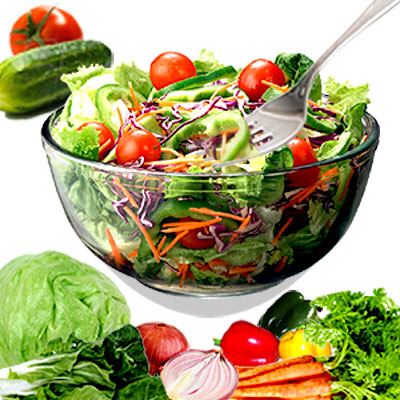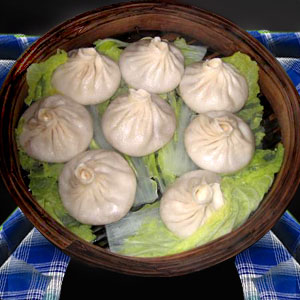Lemon Grass Plant

An aromatic herb, lemongrass is a tall tropical grass with large striped leaves having a rough and uneven edge. The fresh stalks have a lemony odor because they contain an essential oil that is present in the lemon peel too. It has a sweet, smoky, lemony aroma and is used for preparing soups, tea and curries. The long thick grass has leaves on the top and a solid portion at the root end.
Thai lemon grass is used in aromatic Southeast Asian cooking. It can be substituted with lemongrass powder. Lemongrass oil offers a host of benefits. Read more to find out how you can grow lemon grass.
Thai lemon grass
Fresh lemon grass is used as a fresh spice or is dried and powdered and used accordingly. Lemon grass is available in various forms:
- Dry powder
- Cut and sifted
- Chopped slices
Oil
Lemongrass can be stored fresh in the refrigerator by wrapping it in a paper bag. It stays fresh for about 2-3 weeks. The stems can be frozen and used for several months. Lemongrass has the property of imparting flavor to other food items, so care should be taken that it is stored separately.
Lemongrass oil has anti-fungal properties and is used as a pesticide and preservative too. The herb has anti-inflammatory and sedative properties and is also a natural mosquito repellent. Lemongrass enhances digestion and is used as a natural appetite stimulant. It is also used as a mood enhancer because of its vasodilative property.
Buying lemongrass
- Choose stalks that are lemony-green in color near the lower end of the stalk and turning green near the end of the stalk, tight and fragrant.
- Do not buy stalks that are coming apart and those that are loose.
Cooking with lemongrass
Add zest and aroma to your cooking with Thai lemon grass. Though lemon powder and dried lemongrass is often substituted, the tangy lemony scent of fresh lemongrass stalks cannot be replicated. The lower thicker portion of the lemongrass stalk is often sliced and used in salads. It can be crushed with a pestle and boiled in soups and stews. In fact, the characteristic flavor of Tom Yum soup is derived from the lemon grass used in it.
If you use lemongrass powder, a teaspoon of dry powder would equal one stalk of fresh lemon grass. With dries slices, remember to soak them in water before use.
Medicinal properties of lemongrass
Apart from being used as an aromatic spice, lemongrass oil also has many medicinal properties. Lemongrass is widely used as:
- An analgesic
- Anti-depressant
- Anti microbial
- Antiseptic
- Antipyretic
- Astringent
- Bactericidal
- Deodorizing agent
- It is also used to treat fungal infection of the feet
- As foot bath to treat smelly feet
Growing lemongrass
Lemongrass can be grown at homes and in kitchen gardens. Lemongrass can be grown from lemongrass seeds but they take a longer time to grow.
- Select the best stock of lemon grass. Pick fresh lemon grass with bulbs and roots still attached.
- Trim the lemon grass. Trim the dry leaves and the top off of the bulb.
- Place the lemongrass in water, preferably in a jar of water. Place this jar in a sunny window until the roots grow up to an inch or two.
- Transplant the lemon grass into a pot with soil. Place it in warm place with lots of sun. Keep the pot moist and remember not to over water.
- Watch the temperatures. Planting the lemon grass outside near a water source produces large plants.
While growing lemongrass take care of these essentials:
Soil: The plant grows best in well drained sandy soils. The soil should be free of weeds and soil borne pathogens like fusarium and verticillium.
Climatic requirements: Temperatures ranging from 64-84 F and high humidity (80-100%) are best suited for cultivating lemongrass.
Light: Lemongrass utilizes sunlight very effectively; therefore it should be planted in such a way that it is exposed to the sun. Protect it from wind
Lemon grass oil
Lemongrass, when not used fresh or in the dried form can be used as oil. Lemongrass oil is extracted from the fresh or partly dried leaves by steam distillation. Lemongrass oil has a lemony, sweet smell and is dark yellow to amber and reddish in color. Lemongrass oil has watery viscosity. Lemongrass oil can cause irritation to sensitive skin, so care should be taken while using it. It should be avoided during pregnancy, because it could be a possible skin irritant.
Lemongrass oil benefits
- Lemongrass oil revitalizes the body
- Relieves the symptoms of jet lag
- Relieves headaches
- Tackles nervous exhaustion and stress-related conditions
- Overall tonic for the body
- Boosts parasympathetic nervous system, which is a boon when recovering from illness
- Stimulates glandular secretions
- It is useful in respiratory infections such as sore throats, laryngitis and fever and helps prevent spreading of infectious diseases.
- Lemongrass oil is helpful with colitis, indigestion and gastro-enteritis.
- Lemongrass oil helps tone the muscles and tissue.
- Relieves muscle pains by making the muscle supple.
- It also is used for clearing up oily skin and acne, as well as athlete's foot as it lessens excessive perspiration.
- Excellent natural mosquito repellent
- Used in aromatherapy as it is a natural stimulant, analgesic, antidepressant and refreshes the mind
- Keeps bugs away
Lemongrass oil can also be used as:
Vaporizers: In vapor therapy, Lemongrass oil is used to relieve nervousness and as an insect repellant. It revives the mind and energizes it while relieving fatigue.
Cream or lotion: When used in a lotion or a cream, it clears cellulite and tones the skin. It opens blocked pores and helps reduce acne. The antiseptic properties are useful in treating athlete's foot and other fungal infections.
Massage oil or in the bath: Lemongrass oil can be blended with other oils and used as massage oil or can be diluted in the bath. This helps in curing cellulite, digestive disorders, over-exerted ligaments, etc.
Lemon grass seeds
Mature lemongrass produces seed heads. Allow them to dry and store them in plastic bags for easy collection. Seal the plastic bag as soon as you collect the lemongrass seeds. Lemongrass seeds are available in nursery centers and horticulture supply stores too.
Flowering in the lemongrass is based on the climate, soil and growth of the lemongrass. Seeds also appear when the lemongrass flowers, the entire flowering portion of the plant is cut and the seeds are collected from that. The seeds are dried and the stored. From a normal healthy lemongrass plant, we can collect about 100-200 grams of seeds. To grow plants, the seeds are sprouted and then planted in suitable soil conditions.
An aromatic herb, lemongrass is a tall tropical grass with large striped leaves having a rough and uneven edge. The fresh stalks have a lemony odor because they contain an essential oil that is present in the lemon peel too. It has a sweet, smoky, lemony aroma and is used for preparing soups, tea and curries. The long thick grass has leaves on the top and a solid portion at the root end.
Thai lemon grass is used in aromatic Southeast Asian cooking. It can be substituted with lemongrass powder. Lemongrass oil offers a host of benefits. Read more to find out how you can grow lemon grass.
Top of the Page: Lemon Grass Plant
Tags:#lemon grass #Thai lemon grass #lemon grass plant #lemon grass seeds lemon grass oil #growing lemon grass
 Food and Nutrition Facts
Food and Nutrition Facts Chamomile
Parsnip Soup
Dim Sum
Gazpacho Soup
Whole Grain Cereal
Jicama Nutrition
Bok Choy Stir Fry
Chia Seeds Benefits
Teff Nutrition
Kaniwa
Flax Seed
Wheatgrass Benefits
Kelp Benefits
Types of Chili Peppers
Medicinal Benefits of Pomegranate
Arugula Leaves
Maca Root
Pitaya Fruit
Benefits of Celery
Leek
Asparagus Benefits
Oyster Stew
Oyster Mushroom
Lupin Beans
Quinoa
Freekeh
Extra Virgin Olive Oil
Dill Pickle
Sauerkraut
Fat Burning Foods
Nutrition Chart
Food Combining
Calorie Counter
calories ...
Non Alcoholic Beverage
Punch Recipes
Food Label Nutrition
Homemade Sausages
Cooking Steak
Eating on a Budget
Budget Friendly Recipes
Quick Recipes
 Healthy Packed Lunch
Healthy Packed Lunch Overnight Oats Recipes
Eggplant Casserole
Brunch Recipes
Burrito Recipes
Muffin Recipes
Cupcake Frosting
Apple Crisp
Stir Fry Cooking
Seafood Salad Recipe
Cooking Corn on the Cob
Finger Food Recipe
Sandwich Recipe
Bread Stuffing Recipes
Easy Chili Recipes
Picnic Recipes
Edible Mushroom Recipes
Mushroom Soup Recipes
Dip Recipe
Tapas Recipe
Corned Beef Recipe
Canned Salmon Recipe
Tilapia Recipes
Crumb Cake
Flourless Chocolate Cake
Regional Food
 Lasagna Recipe
Lasagna Recipe Peruvian Ceviche
Chinese Food Recipe
Vietnamese Food Recipe
Malaysian Food
Korean Food Recipe
Indian Curry Recipe
Edible Rice Paper
Mexican Food Recipe
Quesadilla
Guacamole Dip
Italian Food Recipe
Spanish Food Recipe
Kosher Food
Falafel Recipe
Tandoori Chicken
Noodles
Canape
Couscous
Meatloaf
Chowder
Gumbo Recipe
Crockpot Recipes
Moroccan Food
Healthy Food
Pre Workout Snack
Matcha Tea
Simple food Swaps to Lose Weight
Foods to Beat Stress
Foods to beat Insomnia
Bone Density Foods
Prebiotic Foods
Kefir Grains
Agave Nectar
Spicy Trail Mix
Pesto Sauce
Homemade Hummus
Crab Cake Sauce
Bamboo Shoots Nutrition
Lemon Grass Plant
Butter Beans Recipes
Loose Green Tea
Seaweed Nutrition
Healthy Food
Low Fat Granola Bar
Steel Cut Oatmeal
Fruit Pizza
Pizza Toppings
Green Smoothie
Healthy Meal Planning
Delicious Mealtime Recipes
Heart Healthy Fats
Healthy Heart Recipe
Healthy Dinner Recipe
Healthy Dessert Recipe
Healthy Fast Food
Healthy Kid Recipe
Probiotic Food
Diabetic Friendly Foods
Fruit Salad Recipe
Bread Pudding
Tofu Recipe
Oat Bran
Broccoli Salad
Avocado Recipe
Iron Rich Food
Brain Foods
Antioxidant Food
Natural Diuretic
Low Fat Cooking Tips
Rice Pilaf Recipe
Low fat Chicken Recipe
Food Tips

Sous Vide Cooking Technique
Natural Sugar Substitute
Stevia Sugar Substitute
Sunflower Seeds Nutrition
Bouquet Garni
Cake Decorating Tips
High Satiety Foods
Thanksgiving Dinner
Safe Food Storage
Frozen Food Storage Tips
Cold Storage Food Tips
Leftover Recipe
Food Pyramid
Dairy Free Food
Microwave Cooking
Food Intolerance
Homemade Ice Cream
Apple Cider Vinegar
Benefits of Honey
Beverage Cooler
Food Poisoning Symptom
Food Allergy Symptom
Food Addiction
Top of the Page: Lemon Grass Plant
Popularity Index: 101,252

